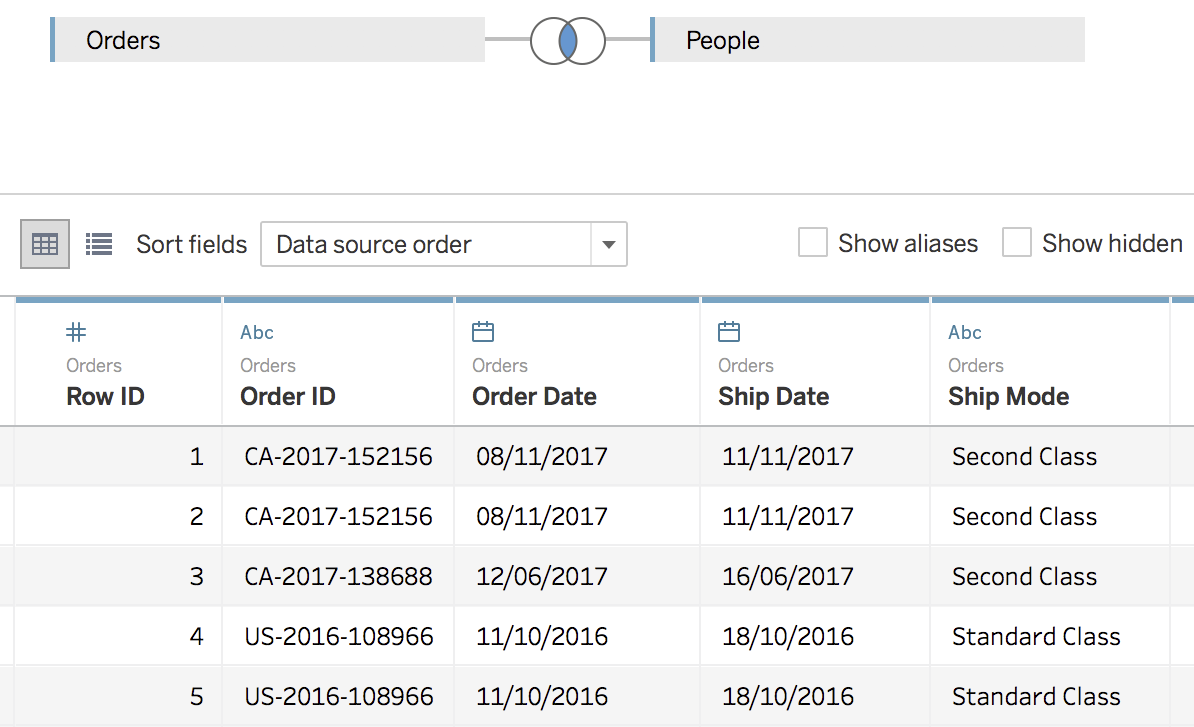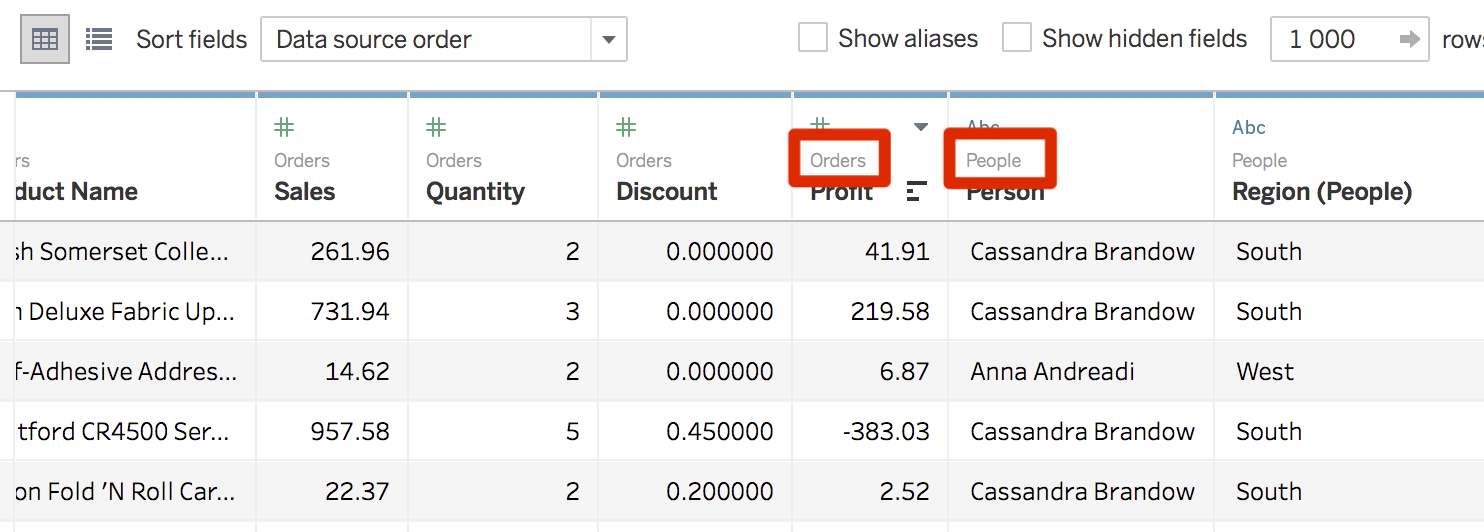A Join creates a single Data Source with columns coming from two (or more) tables. How do Joins work? How can you create them? Are there risks? You'll learn everything in this section.
So far, we've only used one table. A Join is automatically created when using two or more tables. There is always a left table and a right table. In the following screenshot, you see a Join between Orders (the left table), and People (the right table):

The result of a Join is a Data Source that contains the columns from the different tables. As highlighted in the screenshot, you can see that the Profit column comes from the Orders table, and the Person column comes from the People table:

There are four different types of join. Discover them in the next section.



